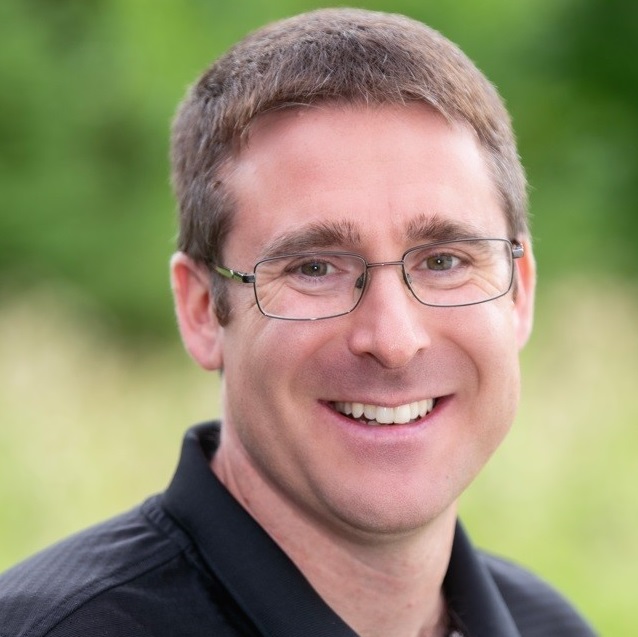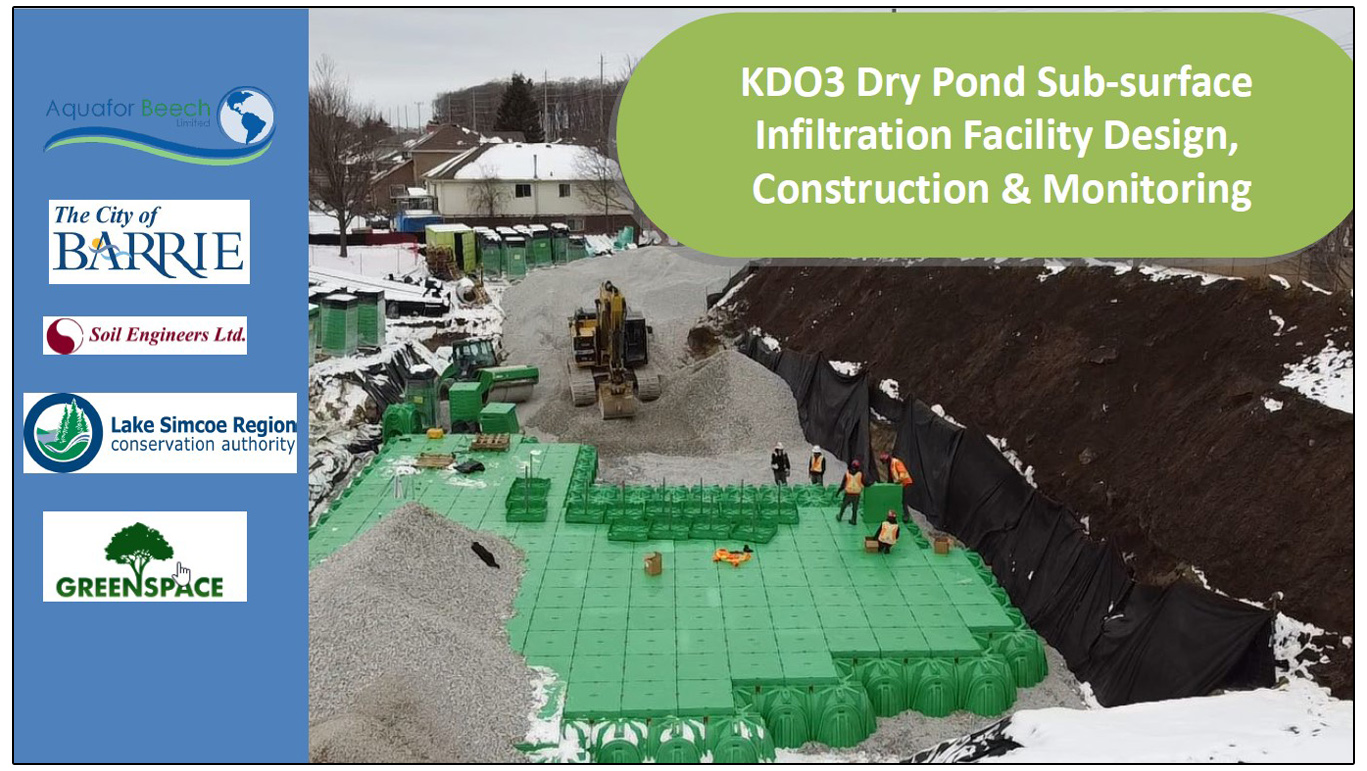TRACK 1, DAY 1
KDO3 Dry Pond Sub-surface Infiltration Facility Design, Construction & Monitoring
ABSTRACT
Increased density targets have put pressure on the natural resources within the Lake Simcoe Watershed. Due to these projections, the Lake Simcoe Region Conservation Authority developed and implemented new and innovative development strategies to meet environmental policy objectives.
All new development or redevelopment is required to maintain groundwater recharge on-site, as well as meet phosphorous targets. These programs provide flexibility where development sites are unable to implement infiltration-based Low impact development projects and stormwater retrofits on-site. Offsetting projects using cash-in-lieu are being successfully implemented by the Lake Simcoe Region Conservation Authority and our local municipalities.
One specific project, Aquafor Beech Limited was retained by the City of Barrie to establish one (1) new SWM Facility and Retrofit three (3) existing SWM facilities. The general scope included the completion of detailed design including geotechnical, hydrogeological and environmental investigations, legal and topographic surveys, hydrologic and hydraulic modelling, contract document preparation, meetings and securing agency approvals, and services related to contract administration and supervision during construction.
The inaugural project, the Sunnidale SWM Facility (KD03) was designed as a first-of-its-kind centralized sub-surface storage infiltration facility with OGS pre-treatment located beneath an existing dry-pond, and utilized the Triton Vault system from Terrafix.
The constructed facility (storage volume of 870 cu.m) infiltrates a long-term average of over 40,000 cu.m per year and removes more than 33 kg of phosphorous per year. The project qualified for and received significant funding from the Lake Simcoe Region’s Conservation Authority’s Water Balance and Phosphorous Offsetting Program due to the ability to improve water quality, flood control and water quality (specifically phosphorous control).
Monitoring completed by the City has demonstrated significant reductions in peak flows and the ability to infiltrate the 25-year event with no off-site discharge. Performance monitoring is being conducted to compare the design criteria against actual performance.
ABOUT THE PRESENTERS

Chris Denich, Aquafor Beech Ltd.
Chris is the Director of Water Resources, LID and Green Infrastructure at Aquafor Beech Ltd. were he participates in a variety of municipal, private and public sector projects focusing on stormwater management facilities as well as Low Impact Development (LID) and Green Infrastructure (GI) stormwater techniques, for both retrofit and new developments.
Mr. Denich plays a key role in the assessment, planning, detailed design, tender preparation, construction administration and supervision of stormwater infrastructure including stormwater management facilities (wet ponds, dry ponds, and wetlands) and decentralized LID sustainable stormwater techniques.
He has presented his research on LID in cold climates, and has provided LID training on LID and Sustainable Stormwater Practices both nationally and across Ontario.

Chandler Eves, Lake Simcoe Region Conservation Authority (LSRCA)
Chandler Eves is the Stormwater Monitoring Technician at the Lake Simcoe Region Conservation Authority.
Over the past 10 years, he has been conducting stormwater performance monitoring; including storm event sampling, long-term deployment of water quality sondes, the assessment of pond hydraulic function, and bathymetric surveys.
Most recently he participated in the development and delivery of a stormwater pond maintenance training course for municipalities.

